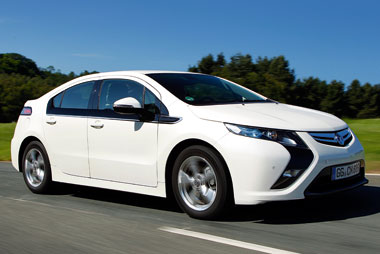Changes to official tests that measure CO2 for cars are being mooted for 2013 which could have a major impact on fleet costs and company car driver tax bills.
The European Commission is proposing changes to the official emissions cycle test to help create ‘real-world’ driving conditions.
Published in an annexe to a recent European Transport white paper, a statement reads: “Ensure that CO2 and pollutant emissions are reduced under real-world driving conditions by proposing at the latest by 2013 a revised test cycle to measure emissions”.
The current test is in two parts and is used to calculate both combined fuel consumption and CO2 emissions. The urban cycle is a series of 12 starts and stops at an average of 12mph and never exceeding 31mph; the extra urban cycle is a sequence of acceleration, deceleration and steady-speed driving, never exceeding 75mph.
The proposals are at an early stage – it is likely to be 18 months before they are finalised – and governments and interest groups will have the opportunity to influence them.
The SMMT will deal with UK-specific lobbying, working closely with the European umbrella organisation ACEA.
A spokesman for the SMMT said: “We are aware that Europe is looking at altering the standard test cycle to make it more representative to real-world motoring.
“As this idea is at the ‘white paper’ stage, it’s not clear what impact this would have on motorists if changes were made. However, on the subject of motoring taxes, SMMT has a clear position that stability and certainty is best for motorists, enabling them to plan motoring costs long term.”
Fleet operators needed to be aware of the potential changes. Driver BIK calculations are based on CO2 emissions, while official fuel figures are a core part of running cost and wholelife cost matrices.
The test could create a more realistic benchmark for plug-in and extended range electric vehicles.
The latest generation of plug-in and extended range electric vehicles have been criticised for claiming fuel consumption and emissions levels under the current test cycle that appear too good to be true.
For example, the Vauxhall Ampera, due in 2012, is driven by an electric motor that has up to 50 miles of range, while a 1.4-litre petrol engine kicks in to recharge the battery on the move extending the range to up to 360 miles.
Original suggestions that the Ampera could achieve 175mpg and 40g/km were based on the current 11km official test cycle. However, once the battery charge is spent, the Ampera uses a petrol engine to charge the battery while driving to allow it to continue under electric power. Its 7.5-gallon fuel tank gives it a potential 310 miles additional range which means that on fuel only, it achieves the equivalent of 41.3mpg.
Meanwhile, the UK government has signalled the end of the five-year BIK tax holiday for electric vehicles with announcement of changes to BIK tax from 2015-16.
It means drivers choosing an electric car now on a four-year replacement cycle will become liable for BIK tax before the end of the lifecycle.
ACFO chairman Julie Jenner said: “The announcement gives fleets time to plan for the new rules.”



















grim reaper - 18/05/2011 15:18
Some of this information is a little worrying. How can we plan our future vehicle fleet based on an emissions test that we know nothing about? I hope fleet operator representative will be given the chance to offer feedback before these rules come in. We are already planning for BIK tax bands related to CO2 emissions for the next four years. Anything that comes in to force in the meantime could cause a great deal of disruption. Drivers will not be happy if they have to switch into a car that will cost them more because of a change in the way emissions are measured. We need more information on this as soon as possible.